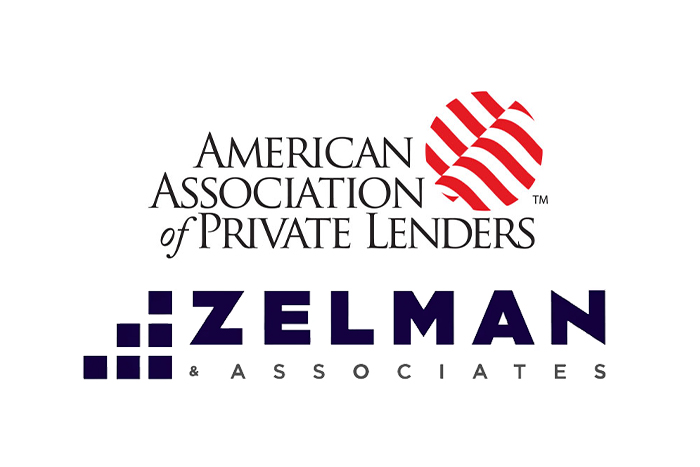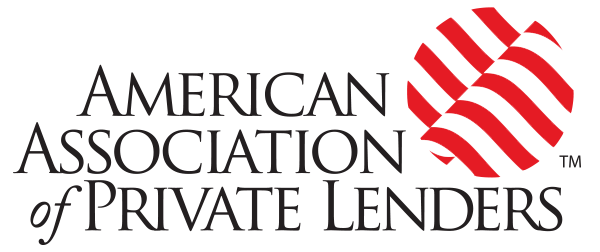Put the puzzle pieces together.
The American Association of Private Lenders has partnered with Wall Street housing research firm Zelman & Associates to launch the private lending industry’s first and only researchfirm-backed benchmark data survey. This quarterly survey—which launches in April—will gather key data on everything from origination volume to loan terms and foreclosure rates.
Respondents will gain access to aggregate reports from the AAPL/Zelman Private Lender Survey and Zelman’s most popular report, the Housing Marketing Overview. This benchmark data will provide respondents with a statistically relevant and ongoing view of our industry’s trends and forecasts for the first time—ever.
The survey is open to private lender owner-operators and C suite level executives. Find more information and sign up to respond at aaplonline.com/industry-survey.
In her article, Ivy Zelman provides a snapshot of the kinds of macro and micro information respondents gain.
Zelman & Associates leverages housing market expertise, extensive surveys of industry executives and rigorous financial analysis to deliver proprietary research and advice to leading global institutional investors and senior-level company executives.
We publish detailed monthly surveys of homebuilders, real estate brokers, mortgage originators, apartment operators and single-family rental companies that provide perspective on nearly the entire housing market. Our survey process and conclusions are unmatched, given their substantial sample sizes, synthesized data, actionable conclusions and high correlation to macroeconomic and other industry data points. Most importantly, the insights our unique survey network provides enables us to connect the dots across the housing mosaic, often ahead of other publicly available data sources.
To highlight our current outlook, we walk through several dynamics impacting the market and provide an overview of our 2020 expectations.
Key Themes Underpinning Our Housing Outlook
Heading into 2020, we remain confident in the underlying fundamentals driving the ongoing housing recovery. However, we balance our positive long-term fundamental outlook—including a demographic tail wind, significant pent-up demand and still-favorable absolute levels of affordability—with supply-side constraints that are likely to become more prevalent again as builder backlogs increase, including tight labor and land development delays.
To summarize our views, there are four key themes underpinning our macro housing outlook.
- Single-family spec inventory is down year-over-year for the first time in seven years, setting the stage for a strong ramp amid robust entry-level demand. Interestingly, we estimate that new construction completions are still running 24% below normalized household formation and replacement demand, suggesting there is still a significant need for new supply to satisfy demand.
- Home price appreciation should modestly reaccelerate, but excess supply and more tempered demand in the move-up market will dampen the magnitude and, indirectly, home improvement spending growth. However, if inventory pressure grows even more intense in 2020, our unit sales outlook could be biased downward, whereas our home price appreciation estimate would be biased upward.
- Multifamily front-end production remains steady, but completions continue to trail our expectations. The result is a mounting pipeline that is already at a 45-year high.
- Mortgage rates are unpredictable, but we assume any surprises would likely be higher than lower, putting pressure on affordability and total mortgage originations, but creating more competition among lenders in favor of consumers.
While mortgage rates remain a wild card, we take comfort in the fact that after a substantial drop in mortgage rates in 2019, the forward Treasury curve suggests a benign outlook, with an implied 30-year rate of 3.70% in 2020. That said, the rate has moved at least 50 basis points between the high and low of the year in each of the last 40 years.
The current state of the economic environment and Fed policy would seemingly put greater odds on an upward versus downward surprise. Another interesting dynamic on the rate front is that roughly three quarters of mortgage holders have mortgage rates of 5% or lower. We believe that is another headwind to inventory turnover because it creates an impediment to discretionary sellers, especially if rates rise further.
Housing on Strong Footing, But Formation Slightly Delayed
Underpinning our constructive view of housing is our proprietary analysis of household formation and demographics.
In 2017-18, total population growth fell to the lowest levels since World War II at less than 0.65% annually. However, due to unwinding recessionary effects and the makeup of the adult population, household formation has been strong the last four years, surpassing the annual average from last decade by over 20%.
We believe 2019 was similarly strong, although we estimate household formation of 1.260 million was slightly below 2018 at 1.290 million. Although we are confident that for-sale housing demonstrated seasonally adjusted improvement throughout the year, combining with still-solid rental housing demand, year-over-year growth has taken slightly longer to unfold. Less new construction supply was also a factor. Nevertheless, near record-low total housing vacancy rates continue to reward housing developers in the current economic environment.
Single-Family Investors
In tracking housing demand, we segment the market between owner-occupant purchasers (i.e., those that will be using the home as a permanent residence) and non-owner-occupant purchasers. This might appear to be playing with semantics, but it is not.
By our definition, non-owner-occupant buyers cover four main scenarios:
- Purchased for use as a vacation or second home
- Purchased to hold and permanently rent
- Purchased to renovate (either marginally or materially) and resell
- Purchased to hold and speculate on home price appreciation (In contrast, other housing commentators have differing definitions of “investors,” which we have found has resulted in some misleading conclusions cited in the media and causing confusion among executives.)
To estimate the share of the market attributable to owners and non-owners, we triangulate numerous data, including from our proprietary industry surveys, robust mortgage disclosures, third-party providers, government surveys and public-company results. In aggregate, we estimate that 23% of 2018 total home sales were to non-owner-occupants, up slightly from 2017 but well below the 30% peak in 2011.
Additionally, while non-owner-occupant buyers are generally painted with a negative brush given perceived higher cyclical risk, we believe that the focus should instead be on the intent and leverage of the buyers. From 2004-07, sales were propelled by non-owner-occupants using high leverage, with a greater share of investors speculating on rising home values. This was bad. From 2012-14, cash-heavy investors that were attracted to distressed asset values helped to clear foreclosure inventory and put a floor under a downward spiral in home prices that was undercutting all homeowners. This was good.
More recently, iBuyers such as Opendoor, Offerpad, Zillow and Redfin have caught the headlines. These entities are purchasing homes directly for a convenience fee and then reselling to other owners or non-owners. Nationally, their purchase volume is immaterial, but in their most established market, including Phoenix, Atlanta, Raleigh and Charlotte, their share of home sales is reaching mid-to-high single digits.
Overall, we care less about the type of homebuyer and more about the risk associated with a buyer. At this point, we believe cyclical risk is quite low, as the shortage of single-family home supply across the for-sale and for-rent markets is constrained and leverage is still responsible. •
Zelman & Associates is the leading Wall Street research firm specializing in housing. Every month, Zelman surveys nearly a thousand executives across various segments of the housing industry to maintain a pulse on current activity in order to provide investors, financial advisors and corporate executives with critical and real-time insights that can guide their investments and business decisions. Insights and analytics from these in-house surveys and other proprietary research offerings are available to institutional investors, corporate executives and others engaged in the financial and housing industries. The firm was founded in 2007 by Hall of Fame Institutional Investor Equity Research Analyst Ivy Zelman.











Leave A Comment